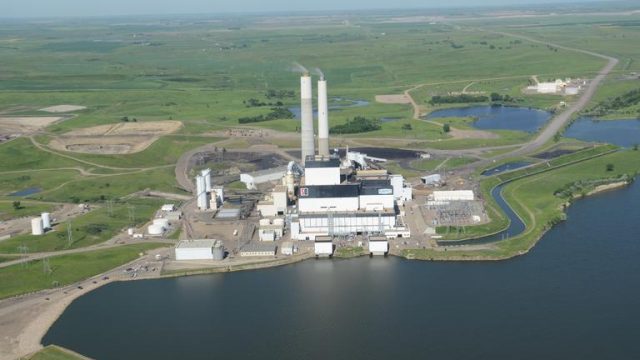Environmental Activists Promote Fake News About Coal Ash

This week a headline about coal ash contaminating groundwater in North Dakota and other states probably caught your attention.
And for good reason. Even the most ardent supporter of coal mining and coal-fired energy is no doubt opposed to a byproduct of that process contaminating our water.
But one didn’t need to read too far past the concerning headlines to find reason to doubt the veracity of the report being touted. The group behind it, EarthJustice, was a partner in the violent protests against the Dakota Access Pipeline nearly three years ago. Their expressed position on oil development wasn’t that it should be safe and responsible, but that it shouldn’t happen at all.
They are in the “keep it in the ground” crowd. Which doesn’t necessarily make the group wrong when they talk about coal ash, but it does provide a frame of reference when state regulators and the coal industry push back saying their report is exaggerated, at best, and inaccurate at worst.
You can read the full report below – it’s titled “Coal’s Poisonous Legacy” just in case you needed a clue as to the spirit in which it’s being offered – but my colleague Patrick Springer’s report on it is much more informative.
This, specifically, says a lot:
The report appears not to have used the requirement of logging “statistically significant increases” that the EPA uses to determine whether higher monitoring readings reflect pollution or high background levels that occur naturally, said Chuck Hyatt, director of the waste management division of the North Dakota Department of Health.
“Their methodology is significantly different than the methodology that the EPA recommends in its CCR rule,” which governs disposal of coal combustion residuals, including ash, he said.
This, too, speaks volumes:
“None of the solid waste facilities associated with the power plants in North Dakota have compliance issues and have not had any notices of violations,” said Diana Trussell, the state’s solid waste program manager.
How to explain, then, the “unsafe” levels in the Environmental Integrity Project’s report? It’s hard to say, Hyatt said, especially since the report lists contamination levels as multiples of safe levels, rather than listing actual values.
Hyatt rejects the possibility that groundwater contamination could have resulted before the state adopted its more stringent regulations in the early 1980s.
“Indiscriminate disposal of coal waste into surface mines has not occurred for twenty years,” according to a 2002 North Dakota Department of Health report that outlined the history of coal waste disposal in the state.
“There will be variability in any dataset — the statistical method allows us to determine with some confidence if the variability is the result of actual changes in concentration, or random error,” Hyatt said. “Selecting an individual datapoint or simple average, as it appears EIP did for their report, does not provide these assurances.”
Would it surprise anyone to learn that a group which wants to destroy the coal industry might game analysis in a report to produce the scariest possible headlines in an effort to turn the public against coal?
By the way, the power companies are saying some of the findings in this report are flat-out incorrect.
Joan Dietz, a spokeswoman for Basin Electric Power Cooperative, which owns Antelope Valley Station near Beulah, said the report’s reference to cadmium levels 100 times the safe level is incorrect.
“The analytical results show all but one sample taken at Antelope Valley indicated undetectable amounts of cadmium, with one sample detecting less than one-tenth the limit, which is five micrograms per liter,” Dietz said. “We are in compliance, with absolutely no evidence of any contamination.”
The same is true for Montana-Dakota Utilities’ R.M. Heskett Station near Mandan, said spokesman Mark Hanson.
“No groundwater impacts from R.M. Heskett Station’s coal ash landfill have been observed at this time,” he said, adding the site is in compliance. “We continue to monitor groundwater as the rule requires and address corrective action if that would change.”
What’s more likely, that a cabal including private industry as well as state and federal regulators across the nation are engaging in a conspiracy to cover up contaminated ground water? Or that a group of political zealots engaged in a holy war against the coal industry might produce misleading information about coal ash?
Which isn’t to say that the issue of coal ash isn’t worth talking about. It is. I very much support things like coal and oil development, but I also want the public to have a weather eye out toward the impacts of that development. We need to be informed, and we need to be vigilant.
What we don’t need is political extremists polluting the debate with fake news.
[scribd id=401707215 key=key-Eu5upIbdupQU2D6ajLc7 mode=scroll]




